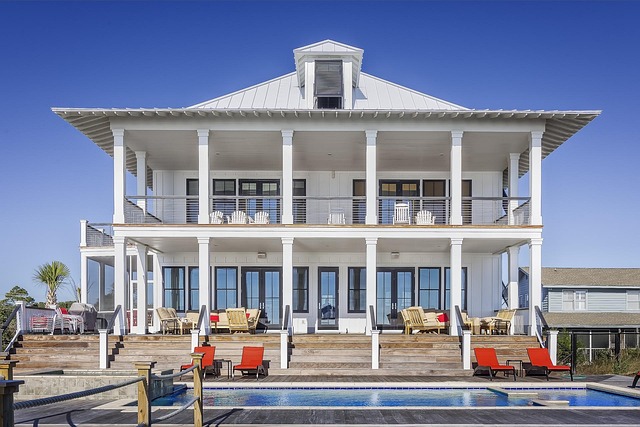Proper insulation is a crucial, often overlooked aspect of sustainable home improvements. By regulating indoor temperatures, it reduces energy consumption and utility bills, lowering both your carbon footprint and living expenses. Eco-friendly options like cellulose and mineral wool insulation offer thermal efficiency, non-toxicity, and versatility while minimizing waste and promoting long-term environmental benefits. Upgrading to green insulation is a smart investment that contributes to a greener planet, enhances comfort, and promotes healthier living spaces.
“Transform your home into an eco-friendly oasis with a simple yet powerful upgrade: insulation. In today’s quest for sustainable living, understanding and optimizing insulation plays a pivotal role. This article guides you through the process, from recognizing the environmental impact to exploring eco-conscious insulation types. We’ll delve into the advantages of green insulation and provide practical steps for an effective home makeover, ensuring your space is not just energy-efficient but also kind to the planet. Embrace these sustainable home improvements for a greener future.”
Understanding the Importance of Insulation in an Eco-Friendly Home
In the pursuit of creating a sustainable home, one often overlooks the significance of proper insulation. Yet, it’s a cornerstone of an eco-friendly living space. Insulation acts as a protective barrier, regulating indoor temperatures and reducing the need for excessive heating or cooling. This, in turn, cuts down on energy consumption, lowering utility bills and minimizing your carbon footprint—key goals for any sustainable home improvement project. By choosing efficient insulation materials, you contribute to a greener planet while enjoying a comfortable living environment.
Types of Sustainable Insulation Options
When it comes to upgrading insulation for an environmentally friendly home, there are numerous sustainable options available that not only reduce energy consumption but also contribute to a healthier planet. One popular choice is cellulose insulation, made from recycled paper and natural fibers. It offers excellent thermal performance while being non-toxic and highly effective at reducing carbon footprint. Cellulose is breathable, helping to maintain indoor air quality by preventing moisture buildup.
Another sustainable option is mineral wool insulation, crafted from natural minerals like basalt or slag. This type of insulation is known for its high resistance to fire and sound, making it a safe and quiet choice for eco-conscious homeowners. Mineral wool is also versatile, suitable for various application methods, including blown-in or rolled forms. Both cellulose and mineral wool insulation contribute to sustainable home improvements by minimizing waste, reducing energy usage, and offering long-term environmental benefits.
The Benefits of Upgrading to Green Insulation
Upgrading your home’s insulation to green options is a smart move for any environmentally conscious individual. Green insulation materials are designed with sustainability in mind, often made from recycled or natural resources that reduce your carbon footprint. These products not only contribute to a healthier planet but also offer excellent performance, ensuring your home stays comfortable and energy-efficient.
One of the key benefits is its ability to enhance overall energy conservation. By providing superior thermal resistance, green insulation helps regulate indoor temperatures, reducing the reliance on heating and cooling systems. This leads to significant savings on utility bills while also decreasing greenhouse gas emissions. Moreover, many eco-friendly insulation options are made with non-toxic materials, ensuring a healthier living environment for you and your family, aligning perfectly with the goals of sustainable home improvements.
Steps to Effectively Upgrade Your Home's Insulation for Environmental Sustainability
Upgrading your home’s insulation is a powerful step towards achieving an eco-friendly living space. Start by assessing your current insulation, identifying areas of weakness or gaps. This process involves checking attics, walls, and floors for adequate coverage and R-value—a measure of insulation’s thermal resistance.
Next, source environmentally friendly insulation materials like recycled fiberglass, cellulose made from recycled paper, or natural fibers such as sheep’s wool. These options not only reduce your carbon footprint but also offer excellent insulation performance. Install new insulation with precision, ensuring it fits tightly in all crevices for maximum efficiency. Regular maintenance, including checking and sealing gaps around pipes and windows, further enhances the sustainability of your home improvements.
Upgrading your home’s insulation is a powerful step towards achieving an eco-friendly living space. By choosing sustainable insulation options, you contribute to reduced energy consumption and lower carbon footprints. This article has explored the importance of insulation in environmental sustainability, highlighting the benefits of green alternatives. With simple yet effective steps outlined, it’s time to take action on these sustainable home improvements and create a more environmentally conscious future for your home.
